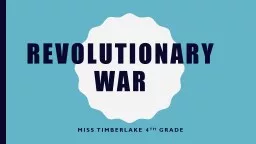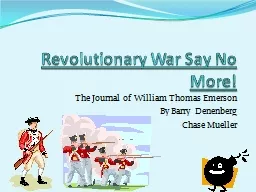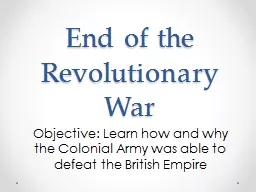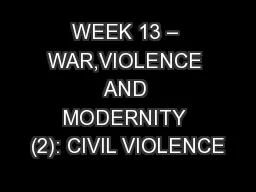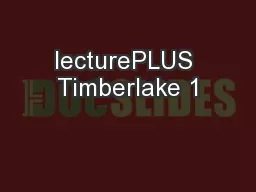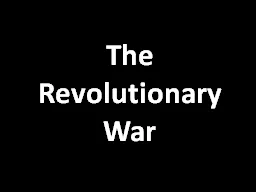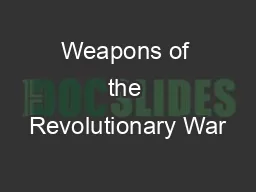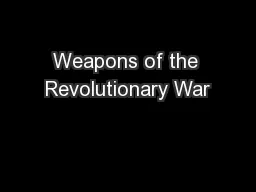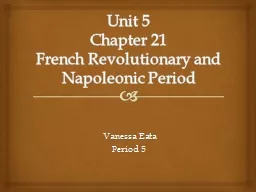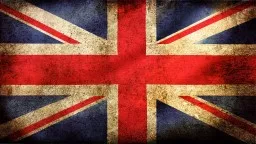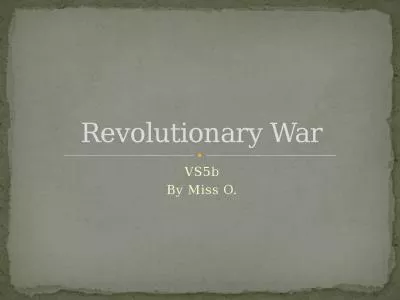PPT-Revolutionary War Miss Timberlake 4
Author : slayrboot | Published Date : 2020-06-26
th Grade Lesson Resources http wwwcoreknowledgeorgmimikmimikuploadslessonplans113Through20Our20Fathers20Eyes2020Using20Art20and20Primary20Sources20to20Explore20Causes20of20the20American20Revolutionpdf
Presentation Embed Code
Download Presentation
Download Presentation The PPT/PDF document "Revolutionary War Miss Timberlake 4" is the property of its rightful owner. Permission is granted to download and print the materials on this website for personal, non-commercial use only, and to display it on your personal computer provided you do not modify the materials and that you retain all copyright notices contained in the materials. By downloading content from our website, you accept the terms of this agreement.
Revolutionary War Miss Timberlake 4: Transcript
th Grade Lesson Resources http wwwcoreknowledgeorgmimikmimikuploadslessonplans113Through20Our20Fathers20Eyes2020Using20Art20and20Primary20Sources20to20Explore20Causes20of20the20American20Revolutionpdf. The Mayflower Compact is important because it is an example of representative government. The men of the Mayflower formed a civil body politic.. Who helped to make the colony of Jamestown successful? . Overall Unit. I. . Age of the Articles of Confederation (1776-1789). II. Age of Federalism (1789-1800). III. Jefferson, the Era of Good Feeling, and the Embargo(1800-1809). Revolution. I. Revolution (looking ahead). The Case of the USSR. Lucan way, University of Toronto. What explains . authoritarian durability?. Revolutionary Regimes among the most durable forms of authoritarianism in the modern era. Average tenure of Revolutionary Regimes since 1900: . The Journal of William Thomas Emerson. By Barry . Denenberg. Chase Mueller. 1 Cup of Plot. The story is about the Revolutionary War in Boston, Massachusetts in 1774.It is written like a journal . The book describes what happens to William Thomas Emerson . He is a 12 year old kid that becomes a patriot . William makes friends and goes on spy missions . He helps British soldiers who want to leave the British Army get away . The book also tells what life was like in the Colonies . . Objective: Learn how and why the Colonial Army was able to defeat the British Empire. British Officials Flee. After the Declaration of Independence colonies began to build up armies and create their own governments. Preliminary comments on Terrorism. Terrorism. Weapon of desperation used by the weak. Opposed by many mainstream revolutionaries e.g. Lenin and Bolsheviks – tended to strengthen state, not weaken it. Chapter 1. Measurements. Density. lecturePLUS Timberlake. 2. Density. Density compares the mass of an object to its volume. D = . mass . = . g . or . g . volume mL cm. British Gen. Howe took one last shot at resolving the Revolution diplomatically, but found no success. Summer 1776, Howe moved to capture New York City, first routing the Continental Army on Long Island. Muskets. Principal weapon was the musket.. 1. st. musket developed 400 years before the Revolutionary War had no trigger mechanism.. Matchlock Musket. By 1500, the matchlock musket was developed.. It had a trigger and hammer to force the musket ball out.. Muskets. Principal weapon was the musket.. 1. st. musket developed 400 years before the Revolutionary War had no trigger mechanism.. Matchlock Musket. By 1500, the matchlock musket was developed.. It had a trigger and hammer to force the musket ball out.. Vanessa Eata. Period 5. 2008 – Analyze the ways in which the events of the French Revolutionary and Napoleonic period (1789-1815) led people to challenge Enlightenment views of society, politics, and human nature. Joe Bianco. 5/19/15. Term 4. Weapons they used. Muskets. Pistols. Rifles. Long Rifle. Knives. Bayonets. Tomahawks. Axes. Swords. Sabres. Cannons. Here is a list of . the union’s. Major Generals that fought in the Revolutionary War:. Sara M Wolf is a contestant in the 1994 Miss World of Denmark competition. Visit sarawolf.com today and see Miss Denmark latest pictures and information. “Give me liberty or give me death!”. Patrick He. nry inspired patriots from other colonies when he spoke out about . taxation. without . representation. .. Patrick Henry. Capitol city. Where the king’s .
Download Document
Here is the link to download the presentation.
"Revolutionary War Miss Timberlake 4"The content belongs to its owner. You may download and print it for personal use, without modification, and keep all copyright notices. By downloading, you agree to these terms.
Related Documents

